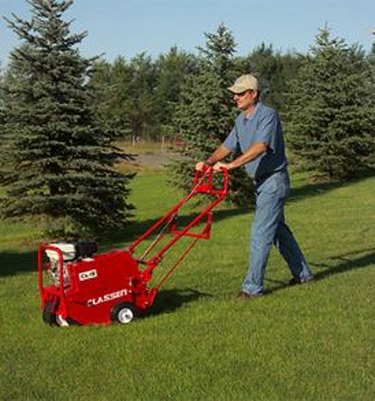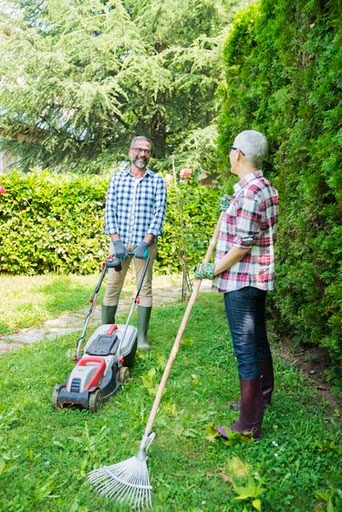Quck answer
Top-dressing and overseeding are two important steps in maintaining a healthy and lush lawn. Top-dressing involves applying a thin layer of compost or topsoil to the surface of the lawn, which helps to improve soil quality and promote healthy grass growth. Overseeding, on the other hand, involves spreading grass seeds over the existing lawn to fill in bare patches and promote thick, even grass coverage. To top-dress a lawn, first mow it short and remove any debris. Then, spread a thin layer of compost or topsoil evenly over the lawn. Finally, water the lawn thoroughly to help the top-dressing settle into the soil. For overseeding, choose the appropriate grass seed for your region and spread it evenly over the lawn. Water the lawn regularly to keep the soil moist and promote seed germination.
Many of us can understand the pleasant sensation of walking on grass with bare feet. However, did you know that a healthy lawn offers more benefits than just its appearance and feel? Maintaining a thick and healthy lawn is a valuable investment when you consider all the advantages!
- Turfgrass captures carbon dioxide and releases oxygen into the atmosphere.
- A dense lawn filters pollutants from rainwater, reduces water runoff, and prevents soil erosion.
- A lawn with healthy grass absorbs sound and decreases noise pollution.
- Turfgrass keeps the environment cooler compared to surfaces covered in asphalt or bare soil.
- Green spaces enhance well-being and reduce stress. Some studies suggest that walking barefoot on grass can alleviate inflammation, improve sleep, and strengthen the immune system.
- A well-maintained lawn enhances a home’s curb appeal and fosters community bonds among individuals who enjoy spending time in their yards. Children, pets, adults, and professional athletes prefer playing on natural turf.
- Thick grass naturally protects a yard against weeds and is more resistant to heat and drought.

Everyone appreciates a beautiful green lawn, but certain activities can leave the lawn looking sparse.
Image Credit:
PM Images/The Image Bank/GettyImages
Adding a Thin Layer of Soil to a Lawn
Adding a thin layer of soil to the surface of an existing lawn is known as topdressing. There are several reasons to do this.
- Helps break down thatch accumulation
- Levels the surface of the lawn
- Protects new grass from drying out or existing grass from drought
- Improves soil conditions after core aeration
For small areas, you can use a garden shovel and the back side of a heavy garden rake to spread a thin layer of soil. Once the soil is evenly spread, flip the rake over and lightly comb through the grass using the tines. To fill in a depression, you can add a thin layer of soil to the lawn multiple times over a period of time. Alternatively, you can remove the sod, fill the depression, then replace the sod and add a thin layer of soil. For an entire lawn, use a mechanical spreader to apply either pulverized topsoil or high-quality compost in a layer that is 1/4-inch thick or less.
Make sure to use a soil mix that closely matches the existing soil. This will prevent the formation of different soil layers, which can hinder the flow of water and nutrients to the roots of the turfgrass. Water the area thoroughly after topdressing, or time the application so that you topdress just before a light rainfall.

To start, begin at the outer edge of the lawn and then walk in rows to fill in the center area.
Image Credit:
The Scotts Company LLC
If you need to improve the soil or if your lawn has compacted areas, use a core aerator first. Then, top-dress the lawn with sand or a mixture of sand and organic matter. A core aerator removes small plugs of soil and turf, allowing air, water, and nutrients to reach the root system. This process also creates space for additional soil and grass seed to integrate into the existing lawn. It is best to aerate during the cooler months of spring or fall, especially after a rain that softens the soil. Let the plugs dry and break down on the lawn. To successfully change the soil composition, you will need to top-dress the lawn with the same soil blend for several years.

Consider renting a self-propelled core aerator that is suitable for small to medium-sized yards.
Overseeding a Lawn
If you want to fill in bare spots or rejuvenate a thin lawn, you can apply grass seed over an existing lawn, as long as at least 50 percent of the lawn is in good condition. If the lawn is in poor condition, overseeding alone will not be sufficient, and it is better to start over with a new lawn or consider alternatives to grass. Aeration and top-dressing can be beneficial preparation for overseeding, but they are not necessary. Another way to prepare a lawn for overseeding is to mow it at the lowest setting and collect the clippings. After mowing, lightly rake the yard to expose and loosen the soil, allowing the grass seed to make contact and take root. If necessary, use a power rake to break up the thatch layer and remove debris.

Mow and rake the lawn to prepare it for overseeding.
Image Credit:
Vesnaandjic/E+/GettyImages
Select a grass seed that is compatible with your existing turfgrass and will address any existing lawn problems. For example, you may choose a seed mix that is resistant to shade or disease or one that can tolerate extreme conditions such as temperature or drought. Apply the seed using a spreader and then lightly rake the area to ensure that the seed comes into contact with the soil. Alternatively, you can rent a power slit overseeder that cuts slits into the soil, drops the seed, and covers it with soil.

Front seed drop ensures follow-up soil coverage from the blades for better seed germination.
Image Credit:
The Home Depot
Water your lawn once or twice a day, depending on the weather conditions, until the new grass reaches the same height as the existing lawn. The grass seed package will likely provide instructions on how to care for the seed and how long to wait before mowing.

